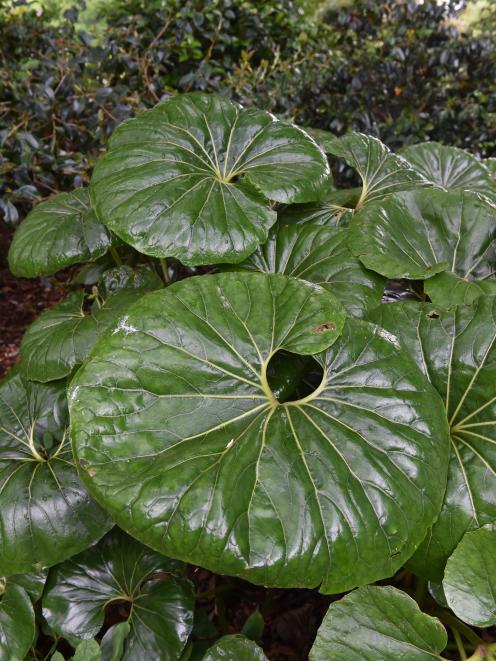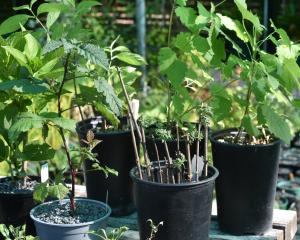
Over the winter and into early spring, sunshine pours through the deciduous branches. Then about mid-spring, over the period of a week or two, the trees become dense with foliage, blanketing the camellia collection in deep shade. One after another in a staggered fashion, slowly at first, these magnificent trees come into leaf until suddenly the entire atmosphere changes.
One way of highlighting the dim areas below is by choosing plants with lighter coloured flowers and foliage. Flowers of dark reds and purples can be lost in the gloom while lighter colours, white, cream, lemons and light blues, pinks and mauves capture and reflect the light. Lighter colours draw attention into the depth of the borders.
Foliage, too, can lighten a darker area with bright silvers, light cream colours and lime greens. Foliage can be used to great effect in shaded zones.
To capture as much light as possible, plant leaves respond by growing larger to meet their food requirements. Big foliage plants such as Hosta, Chatham Island forget-me-nots and the tractor seat plant, pictured, appear larger than life in the deep shade.
See big foliage and light-reflecting colours in the lower botanic garden camellia collection.
-Garden Life is produced by Dunedin Botanic Garden.
For further information contact Marianne Groothuis.











